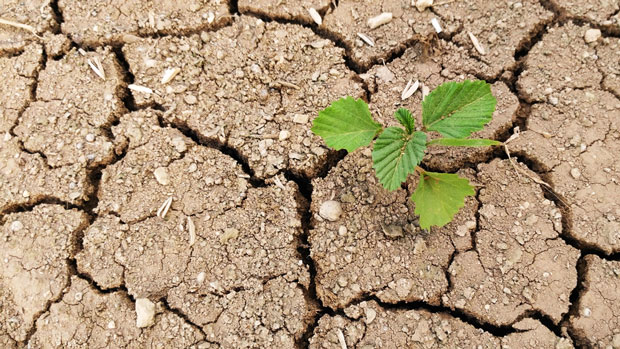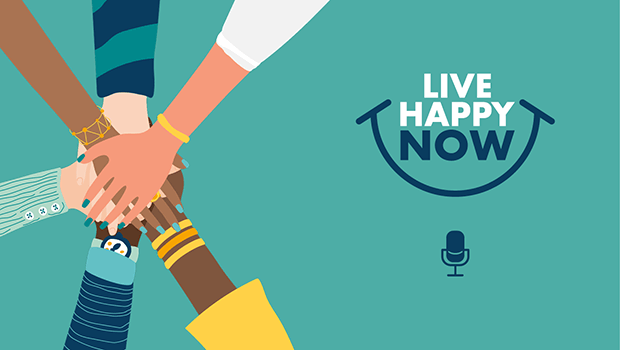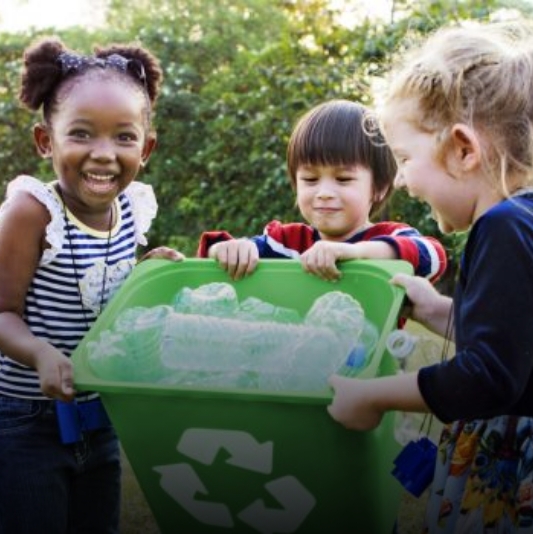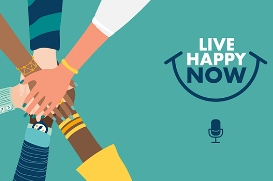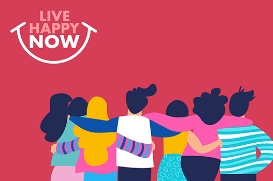Victims of flood and fire find solace and hope—with help from their communities.
Furious wildfires. Destructive earthquakes. Mass shootings. As 2017 comes to an end, survivors of natural and manmade catastrophes are reaching deep inside themselves to gather the strength to rebuild their lives. It will take time.
“There’s no quick fix for devastation,” says Ken Druck, Ph.D., expert on healing after loss and author of Courageous Aging and The Real Rules of Life. There’s no single path to recovery either, but receiving support from family, friends and community, letting your emotions run their course and feeling gratitude for what you’ve got all help, say experts and survivors.
People who suffer catastrophic loss are utterly broken at that moment, says Ken, who learned lessons of loss when his 21-year-old daughter died in a bus crash in India in 1996. “The best way you can help is to have faith in them; know that they will someday have the ability to prevail, to survive the devastating losses that they’ve suffered.”
A Year to Remember
There were plenty of losses in 2017. Hurricanes Harvey, Irma and Maria killed more than 260 people and destroyed or damaged more than 200,000 mainland U.S. homes and thousands more in Puerto Rico and the Virgin Islands. A 7.1-magnitude earthquake in October killed at least 369 and damaged or destroyed 23,000 homes and other buildings in Mexico City and the state of Morelos, the quake’s epicenter. Northern California wildfires damaged or destroyed more than 14,700 homes and killed at least 43 people in October. And as this piece was going to press, more wildfires raged in Southern California, driving thousands of people from their homes.
Additionally, mass shootings in Las Vegas; Sutherland Springs, Texas; Corning, California; and other places left at least 140 dead and hundreds injured. “In every one of these communities, people have come together to help each other in unprecedented ways,” Ken says. “All of us are wired differently. Some people will find the strength within themselves to bounce back; others will need more help.”
One Family in a Flood
One Texas family grateful for support they received says the experience changed their lives. Becky and Steven Sapaugh were among the estimated 13,000 people rescued from Texas homes flooded by Hurricane Harvey.
“Our entire neighborhood was flooded out,” Becky, 59, says of her 709-home gated subdivision in Katy, just west of Houston. “We have a two-story home, and everything on the bottom and three cars in our driveway—everything was completely demolished.”
Before Harvey struck, the Sapaughs had stocked up with food and supplies and prepared to ride out the storm at home while listening to weather updates on their battery-powered radio. “We’ve been in the area for 30 years, so we felt very safe where we were, extremely safe, and we always had a second floor. We just decided to stay there like almost everyone in that part of the city.”
On Saturday, Aug. 19, power was out but Harvey’s rains paused for a couple hours. Water that had crept into the Sapaughs’ yard drained completely. Family called and offered to put them up. “We said, ‘No, we’re going to stay here.’” By Sunday, gushing rain and reports of water rising along a nearby reservoir dam got them thinking about leaving, but it was too late.
“When I woke up, it was like a waterfall was right outside my house,” Becky says. It sounded like rushing water was just falling from the sky.” The street leading out of their neighborhood was flooded. “You could not go right; you could not go left. They already had it blocked off by the police because water was so high out there.” But by Monday morning, when the Army Corps of Engineers started releases from a nearby reservoir, water rushed to their front porch. “That’s when we knew it was going to come in the house. That’s when we knew we were trapped with everyone in the neighborhood,” says Becky.
Alerted by her daughter and her church that the Sapaughs were in the house, volunteers with a boat later knocked on their front door. “Are you Steven and Becky Sapaugh? We’re here to rescue you,” Becky recalls them saying. Volunteers lifted Becky, who has muscular dystrophy and can’t walk far, into the boat with her dog. Her husband followed, carrying just a backpack full of belongings and wading through waist-deep water as they made their way to the part of the neighborhood where bigger boats could evacuate them to safety. The Sapaughs stayed at their daughter’s Houston home, which didn’t flood, and now are in a company-paid apartment while they get back on their feet. About 10 days passed before they could first see their water-damaged home again.
“The experience itself, although it was traumatic, sad and frightening—we have a very strong faith in Jesus Christ, and we would have never made it without our faith in God,” Becky says. “I started rethinking about how all of these strangers, the people I met all through the rescue process. That made me start realizing how much people care about each other and that made me want to help.”

Her husband’s office gave employees time off to volunteer to aid flood victims. “His department came to our house, and they basically gutted the entire first floor. I mean everything—the sheetrock, appliances—everything is out of it and ready for rebuilding.” They recently signed loan papers for the project.
“God gave us so many people that have been generous…and we have been so grateful. I am rebuilding my home, I have a roof over my head, my family is alive. A lot of people lost a lot more than we did and won’t get it back.”
The Importance of Community
Community support “absolutely helps” you recover, says Kevin Baughman, who with wife Janet lived on the outskirts of Santa Rosa, California. In October, wildfire flames roared down a ridge, consuming their retirement dream home that included a small vineyard, little winery and a guest house. They had lived in the home about seven years and had created many memories there. “I even had pictures of my granddaughter punching down grapes in the winery,” Kevin says. Flames devoured the pictures and nearly everything else they owned.
On the evening of Oct. 8, wind-driven smoke permeated the air as Kevin put the chickens away in their coop for the night. He settled in the house’s front room so smoke could wake him if dangerous flames approached. Janet stayed in the master bedroom in the back of the house. Shortly after midnight, says Kevin, a loud, odd boom rousted him from a dreamy half-sleep. When he walked out front to investigate, he could see the ridge opposite their house smothered in orange-glowing smoke.
“I knew there was a fire and it was pushing in our direction,” Kevin recalls. He went in, woke his wife, and by the time they returned to the front of the house a couple minutes later, the flames were coming down the opposite ridge.
“It was crystal clear what I had to do; I didn’t feel muddled,” Kevin says. Yet he first grabbed the wrong keys to a nearby fire gate and roared off in their Ford F-250 pickup, honking his horn to alert neighbors to the swiftly approaching blaze. After returning to grab the right keys and opening the fire gate to back roads that would lead them out of the fiery hills, he spent nearly 20 minutes waking neighbors. He banged loudly on the windows at the home of one elderly man he knew took sleeping pills as his wife was in a care home and he had trouble sleeping.

By the time Kevin got home, flames were down the ridge. His wife packed the pickup and he grabbed a few things. They headed to his son’s Santa Rosa home, where they were safe for a day until fire forced evacuation from there. However, his son’s home survived, and Kevin and Janet live there too, now, participating in life and babysitting whilst planning to rebuild the home they lost.
At first, Kevin says, he felt disbelief, like it wasn’t really happening. “Looking back on it now, I ask myself why I thought my house would have a chance of making it. This is something you read about in the newspaper. It’s not going to happen to you.” Realization came when friends in search-and-rescue were clearing the neighborhood—looking for people who might have perished in the blaze—saw the house and told him it was gone.
“It’s overwhelming. It felt like my brain got whacked. For the first week, it was like a record player stuck in a circle. You carry on normally. Maybe you have a conversation with somebody. You’re continually processing, but maybe you talk about a tool, you think, ‘I have that tool’ and then realize, ‘Oh, no I don’t!’”
Everything got muddled and he was not sleeping well. Eventually Kevin came to terms with losing irreplaceable family heirlooms such as jewelry, clocks from the 1800s and a Winchester rifle from the Indian Wars. “Things you won’t have. What’s real is family around you, your faith and memories that you have. Feeling that is what made it easier,” Kevin says. “Besides, it’s tough to feel sorry for yourself when your 4-year-old granddaughter is running down the hall with a book she wants to be read.”
How We Accept and Move On
Brett Ford, assistant professor at the University of Toronto psychology department and director of the school’s Affective Science & Health Laboratory, has studied the psychological health benefits of accepting negative emotions and thoughts. Feeling negative is a natural response to stressors such as natural and manmade disasters, she says.
“Although wanting to get rid of our negative emotions feels normal and is an automatic response for many of us, it can in fact be futile or counterproductive,” Brett says. “Simply realizing this—and interrupting our habitual responses to our own emotions—might be helpful.”
Brett offers several strategies for recovering from tragedy.
· When times are tough and you’re feeling angry, worried, sad—try to simply let your feelings happen.
· Allow yourself to experience your feelings, without judging those feelings, and without trying to control or change them.
· Let your feelings run their course. For example, you could tell yourself that there is no right or wrong way to respond, that these feelings are a natural response, or that your feelings are like clouds passing by that you don’t need to control.
After Tragedy
“Sometimes we feel like a victim,” says Ken, “whether we feel like it’s karma, God punishing us, bad luck, whatever our theory. Really, sometimes bad things happen to good people. There’s joy and miracles and boundless happiness and bliss, but there’s also suffering and sorrow, setbacks, moments of emptiness and lost-ness, and this is all part of life.”
Kevin concurs, noting that he viewed the fires “in the realm of an act of God.”
“If you live long enough, bad stuff is going to happen to you,” he says. “The West will deal with wildfires; the Midwest, sheet ice; other places, hurricanes. There’s not a place you can go where you’re completely safe,” Kevin says.
This past year’s disasters are good reminders that you should do at least a little planning, says Kevin.
“You take for granted what you have and are experiencing, and think it will go on forever. It doesn’t. A spouse dies, divorce happens, a house burns down. You never plan for that.”
“We’ve become very contented with the way things are, we don’t want to think about a disaster, like Florida, Texas and California. But a little bit of forethought, as simple as setting down what are you going to grab in an emergency, like the computer or family jewels, would help.”
Some of the things they had left behind included Kevin’s wife’s engagement ring, and a gold watch Kevin’s mom had given to his father. Returning to the burned ruins of his home, Kevin donned a hazmat suit and respirator, sat on the edge of the foundation and peered at the ash. He reached down and found a blob of beaded, melted jewelry with the engagement ring stuck to it. Going back to where he thought the closet had been, he turned over a shovelful of fire debris. That first shovelful held the watch melted into a blob in 2,000-degree fire.
“It was barely recognizable,” says Kevin, “but I knew it was my dad’s gold watch that mom had given him years and years ago.”
Jim Gold is a veteran journalist living in California. Savannah Mehrtens is a journalism student in her junior year at Texas A&M University.


